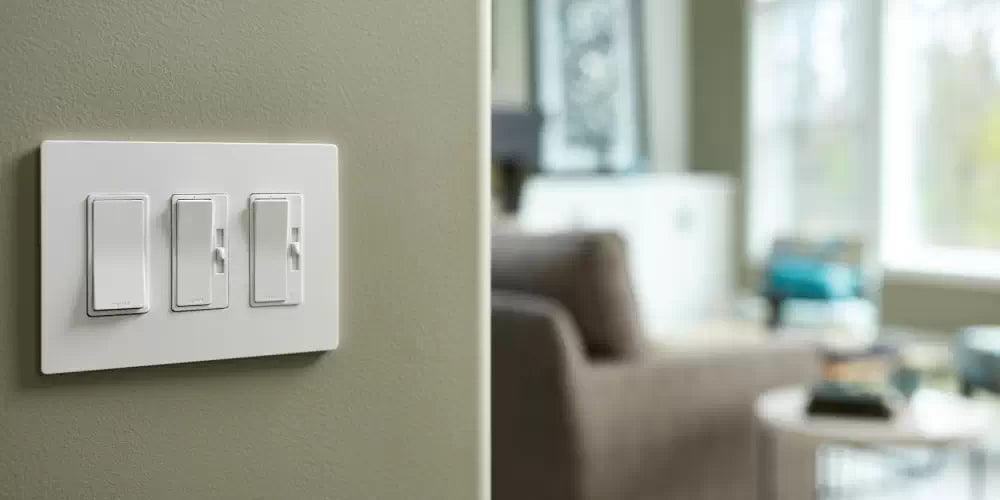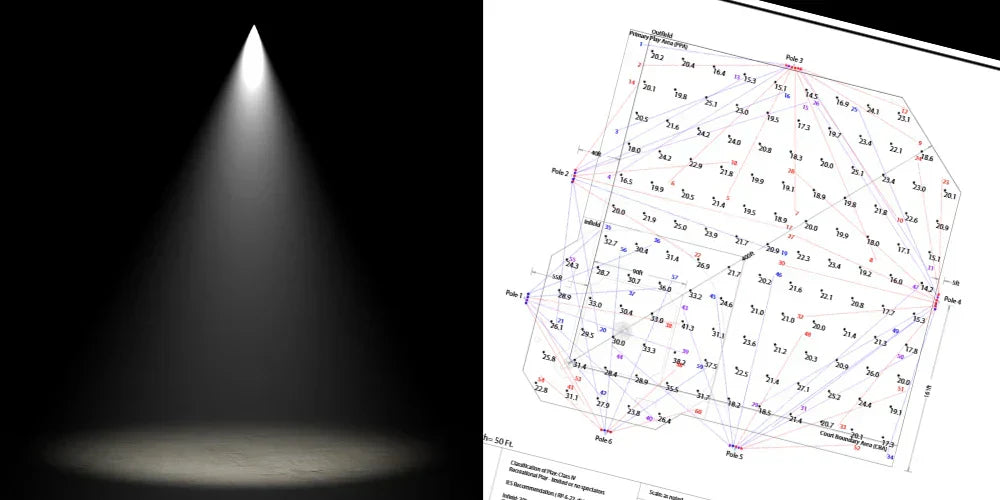Lighting is an essential element in creating the desired atmosphere in any space. A dimmer switch allows you to control the brightness of your lighting fixtures, setting the mood for different occasions. It's not just about aesthetics, though. Dimmer switches can also help save energy and extend the lifespan of your bulbs. Whether you're using dimmable LED lights, incandescent or halogen bulbs, understanding how to use a dimmer is critical.

The Evolution of Dimmer Switches
Historically, dimmer light switches were primarily used with incandescent or halogen bulbs, which are known for their dimmability. Nowadays, advancements in lighting technology have led to the development of dimmable LED lights, which are energy-efficient and have longer lifespans.
How Does a Dimmer Switch Work?
Dimmers operate by regulating the amount of electrical current that reaches the light bulbs. Traditional light switches simply turn the lights on or off, but dimmer switches provide a range of brightness levels in between. They achieve this by using a solid-state electronic component called a Triac, which adjusts the voltage flowing to the bulbs.
When you turn the dimmer switch, it sends a signal to the Triac, which then chops up the electrical waveform, effectively reducing the power delivered to the lights. The more the waveform is chopped up, the lower the brightness of the lights. This allows you to smoothly transition from bright to dim lighting, creating the perfect ambiance for any occasion.
Types of Dimmer Switches
The market offers a diverse array of dimmer light switches, each designed to cater to specific lighting requirements and technologies. Let's explore the most common types:
Incandescent and Halogen Dimmers
These traditional dimmers are compatible with incandescent and halogen light bulbs. They work by reducing the voltage supplied to the filament, thereby controlling the brightness of the light source. Incandescent and halogen light dimmers are widely available and relatively inexpensive, making them a popular choice for many households.
LED Dimmer Switches
As LED lighting technology continues to gain popularity, specialized LED dimmer switches have emerged to address the unique dimming requirements of these energy-efficient bulbs. LED dimmers use advanced circuitry to ensure smooth and flicker-free dimming, providing a seamless lighting experience.
ELV Dimmers
ELV (Electronic Low Voltage) dimmers are used with low-voltage lighting systems, such as those found in halogen and LED fixtures. These dimmers work by controlling the voltage supplied to the light source, allowing for precise brightness adjustments. ELV dimmers are particularly beneficial in situations where you need to maintain a consistent lighting level, such as in home theaters or high-end retail spaces. They offer smooth, flicker-free dimming and can handle higher wattage loads compared to standard dimmers.
MLV Dimmer Switches
MLV (Magnetic Low Voltage) dimmer switches are designed for use with magnetic low-voltage lighting systems, commonly found in halogen and incandescent fixtures. These dimmers work by controlling the current supplied to the transformer, which in turn adjusts the brightness of the light. MLV dimmers are known for their reliable performance and ability to handle higher wattage loads. They are often used in commercial and residential settings, where a consistent and dependable dimming solution is required.
0-10V Dimmer Switches
0-10V dimmer switches are a specialized type of dimmer that operates by sending a low-voltage control signal to the light fixture. This signal is used to adjust the brightness of the light, making it a popular choice for commercial and industrial applications. 0-10V dimmers are commonly used in larger-scale lighting systems, such as those found in office buildings, warehouses, and healthcare facilities. They offer precise control over the light output and can be integrated with building automation systems for enhanced energy management. To learn more about 0-10V dimming, visit our separate guide.
Fluorescent Dimmer Switches
Fluorescent dimmer switches are designed to work with traditional fluorescent lighting fixtures, such as those found in offices, schools, and other commercial settings. These dimmers regulate the voltage and current supplied to the fluorescent lamps, allowing for controlled dimming. Fluorescent light dimmers often incorporate specialized ballasts or drivers to ensure proper operation and prevent issues like flickering or premature lamp failure.
Universal Dimmer Switches
Universal light dimmers are designed to work with a variety of light sources, including incandescent, halogen, and LED bulbs. These versatile switches offer convenience and compatibility, eliminating the need for separate dimmers for different lighting technologies.
Smart Dimmer Switches
Smart dimmer switches integrate with home automation systems, allowing you to control your lighting remotely using a smartphone app, voice commands, or other smart home devices. These advanced switches offer programmable schedules, scene settings, and even energy monitoring capabilities.
Integrated Dimmer Systems
For larger-scale installations or commercial settings, integrated dimmer systems offer centralized control over multiple lighting circuits. These systems often incorporate advanced features like scene programming, occupancy sensors, and energy management capabilities.
Different Styles of Dimmers
Rotary Dimmers
Rotary dimmer light switches feature a knob or dial that you can turn to adjust the brightness level. These switches are often preferred for their intuitive operation and seamless dimming experience.

Slide Dimmers
Slide dimmers incorporate a linear slider that you can move up or down to increase or decrease the light intensity. These switches provide a sleek and modern look, blending seamlessly with contemporary interior designs.

Touch Dimmers
Touch dimmers offer a stylish and innovative way to control your lighting. With a simple touch or tap, you can effortlessly adjust the brightness levels, eliminating the need for physical switches or knobs.

Toggle Dimmers
Toggle dimmers have a simple on/off toggle switch with a small slider next to it for dimming control. They are great for rooms where you want to quickly switch between different lighting levels.

Choosing the Right Dimmer for Your Bulb
Not all types of bulbs are compatible with all types of dimmer switches. It's crucial to match your light source with the right dimmer mechanism to avoid inconsistency in lighting or flickering illumination. Here are some guidelines:
- Incandescent and Halogen Bulbs: These types of bulbs can be dimmed using standard rotary or basic slider dimmers. However, incandescent low voltage systems might require an ELV dimmer to protect the driver.
- Fluorescent Lights: Traditional fluorescent fixtures are not commonly dimmable due to the cost of dimmer-compatible ballasts. If dimmable, they generally use a 0-10 volt dimming system.
- Compact Fluorescent Bulbs (CFL): Newer CFL bulbs are generally dimmable, but always refer to the bulb itself to confirm. Generally, you can use a standard dimmer.
- LED Bulbs: Like CFLs, LED bulbs can generally dim using a CL dimmer, but make sure to check manufacturer requirements.
- Integrated LEDs: Dimming LEDs depends on the module used. Most integrated LEDs require an ELV dimmer.
Troubleshooting Common Dimmer Issues
While dimmer light switches are generally reliable, you may encounter occasional issues. Here are some common problems and their potential solutions:
- Flickering or Buzzing Lights: This can be caused by incompatibility between the dimmer light switch and the light source, poor wiring connections, or electrical interference. Try replacing the dimmer or consulting an electrician.
- Dimmer Not Working: Ensure that the dimmer is properly wired and that the circuit breaker is on. If the issue persists, the dimmer may need to be replaced.
- Dimmer Switch Getting Hot: Overheating can occur if the dimmer switch is overloaded or not rated for the connected load. Reduce the wattage or replace the dimmer switch with a higher-rated model.
- Lights Not Dimming Properly: This can be caused by incompatibility between the light dimmer and the light source. Check for compatibility and consider replacing the dimmer or light bulbs.
Benefits of Using a Dimmer Light Switch
Incorporating dimmer light switches into your lighting system offers a multitude of advantages:
- Energy Efficiency: By reducing the amount of electricity consumed by your light sources, dimmer switches contribute to lower energy bills and a more environmentally conscious lifestyle.
- Ambiance Control: Dimmer switches empower you to create the perfect atmosphere for any occasion, whether it's a cozy evening at home or a sophisticated dinner party.
- Extended Bulb Life: Operating light bulbs at lower intensities can significantly prolong their lifespan, reducing the frequency of replacements and associated costs.
- Versatility: With a wide range of dimmer options available, you can tailor your lighting to suit various room types, decor styles, and personal preferences.
How to Choose the Right Dimmer Switch for Your Needs
When selecting a dimmer light switch, consider the following factors:
- Lighting Technology: Ensure compatibility with the type of light bulbs or fixtures you plan to use (incandescent, halogen, LED, etc.).
- Wattage Rating: Choose a dimmer switch with a wattage rating that matches or exceeds the total wattage of the connected light sources.
- Installation Requirements: Determine if the dimmer switch requires a neutral wire or can be installed without one.
- Aesthetic Preferences: Consider the style and design of the dimmer to complement your interior decor.
- Smart Home Integration: If you have a smart home system, look for dimmer switches that offer seamless integration and remote control capabilities.
Tips for Creating the Perfect Ambiance with Dimmer Light Switches
Now that you have installed dimmer switches in your home, it's time to create the perfect ambiance for every occasion. Here are some tips to help you make the most of your light dimmers:
- Layer Your Lighting: Combine different types of lights, such as overhead fixtures, lamps, and accent lights, to create a layered lighting effect. Use light dimmers to adjust each layer independently, allowing you to tailor the lighting to suit your mood and activities.
- Experiment with Color Temperature: Some smart dimmer switches allow you to control not only the brightness but also the color temperature of your lights. This feature can help you create different atmospheres, from warm and cozy to cool and invigorating.
- Set Lighting Scenes: Program your smart switches to save your preferred lighting settings as scenes. For example, you can have a "Movie Night" scene that dims the lights to a cozy level, or a "Dinner Party" scene that sets a warm and inviting ambiance.
- Consider Dimmers with Remote Control: If you want the convenience of controlling your lights from anywhere in the room, consider dimmers with remote control capabilities. This allows you to adjust the lighting without having to get up from your seat.
By implementing these tips, you can transform your home lighting into a personalized experience that perfectly suits your needs and preferences.
The Future of Dimming: Smart Dimmers
As technology continues to evolve, so do dimmer switches. Smart dimmers allow you to control the brightness of your lights remotely using a smartphone or tablet. Some even offer the option to schedule your lights to dim or brighten at specific times, providing an added layer of convenience.

Dimmer switches offer a world of possibilities when it comes to creating the perfect lighting ambiance in your home or workspace. By understanding the different types of dimmer switches and their unique features, you can make an informed decision that aligns with your lighting needs, aesthetic preferences, and energy-saving goals.
From traditional rotary dimmers to cutting-edge smart dimmer switches, the options are plentiful. Embrace the versatility of dimmer switches and elevate your lighting experience to new heights. Whether you're using dimmable LED lights, incandescent, or halogen bulbs, understanding how to use a dimmer switch effectively can greatly enhance your lighting experience.






1 Comment
Lighting plays a very important role in any room or place. It is a must to ensure that good lighting according to need is selected. Dimmer switches can actually be a wonderful choice. Keep posting!
Lighting design for business applications